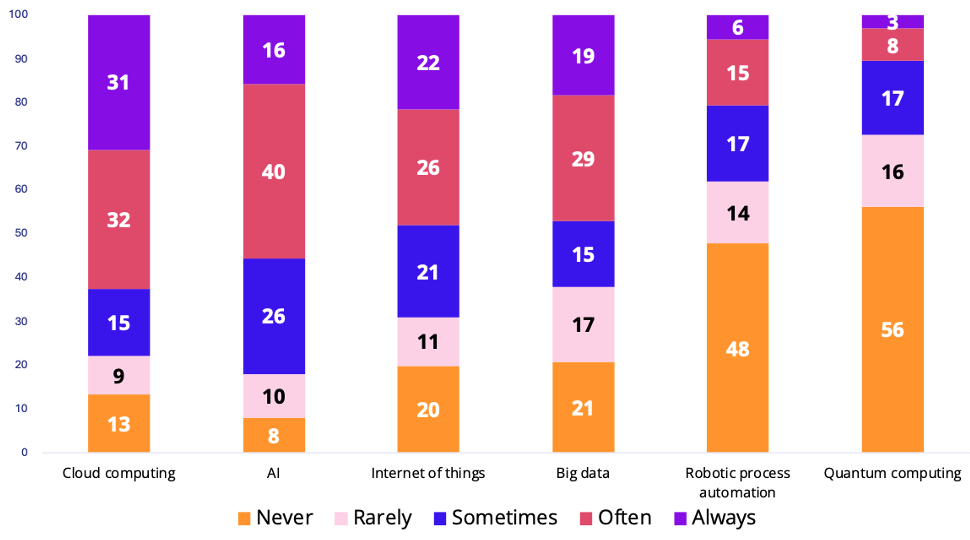Skills gap and opportunities | What our survey tells us about the future of work
As organisations across Europe embrace advanced digital technologies (ADTs), our survey gathered insights from over 300 professionals across 14 countries. The findings are clear: employees are ready and motivated, but gaps in training, communication, and strategic alignment could hold organisations back from fully realising digital transformation.
Technology use is rising, but trust is not universal
Cloud computing (63%) and AI (56%) are the most-used ADTs in workplaces today, followed by IoT and big data.
Despite this, only 45% of employees believe ADTs bring value to their organisation. Yet when it comes to personal experience, 78% report that these tools improve their productivity, creativity, satisfaction and safety; significantly higher than the 50% reported by managers.
This suggests that employees perceive the benefits of digitalisation more directly in their daily tasks, while managers may focus more cautiously on firm-level metrics or broader transformation outcomes.

The skills perception gap
Both digital and human skills are seen as essential.
- 85% of employees and 97% of managers agree that basic digital skills are critical
- 86% of employees and over 85% of managers view advanced digital competencies and human skills (e.g. problem-solving, communication) as vital for the future.
Employees rate themselves positively on human skills, but there’s a disconnection: employees rate themselves higher than managers do, particularly in creativity, problem-solving, and digital fluency. Managers, meanwhile, report widespread skill shortages, particularly in those same areas.
A perception gap exists: employees feel confident, but managers are seeing shortcomings in recruitment and readiness.
High motivation, low support
Motivation is not the issue, employees are eager to learn, a full 96% say they are motivated to develop new digital skills, and 84% feel encouraged by their organisation to do so.

Most firms rely on technology adoption (83%) and internal upskilling (72%), with 63% also hiring new talent. The intent is there to invest in people, but execution varies, and employees may not always see the benefit directly.
Implementation is everything
The TechConnect report doesn’t just highlight a skills gap, it spotlights a broader disconnect between strategy and experience. Organisations must:
- Clarify the value and purpose of digital tools
- Make training more visible, accessible, and consistent
- Align internal perceptions to unlock collective momentum
The workforce is motivated. The digital tools are available. The next step is to bridge the gap between intention and implementation.
